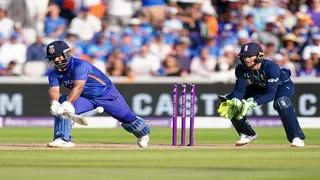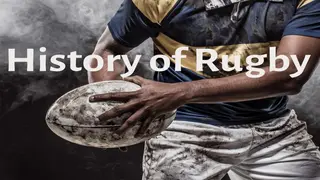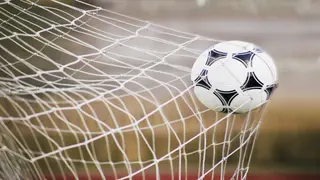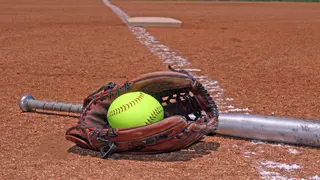Which country invented the game of cricket? History and all the facts
Cricket
Soccer is the ultimate game for players of all ages across the board. With historians claiming that the origins of the game can be traced back to the Aztecs, one can only imagine what the first game looked like. Many can easily recognise the black-and-white aerodynamic ball associated with soccer. Dig in for a deep dive into the history of the first soccer ball in the world.

Over the years, modern development in the game has produced the familiar, round, white-and-black ball. This article investigates the timeline of soccer history and its development over the years. Scroll down for facts about the first soccer ball.
Today, footballs are made of leather and rubber, their synthetic variants or synthetic materials. Natural sources such as rubber and leather have been in use for centuries in various ways. Sports Brief has done extensive research using reliable sources to provide answers about the very first soccer ball ever and pictures of the first soccer balls.
Which country invented the game of cricket? History and all the facts
Cricket
Early civilizations such as in Ancient China, Greece, Japan, Europe and the Roman Empire played various types of ‘sphere-kicking’ games such as Cuju, Kemari, La Soule, Shrovetide, Episkyros and Harpastum. The use of orbs-like equipment in sporting activities has also been referenced in 7th-century literary works such as the Odyssey.
Historians claim that these early ‘spherule kicking’ games were played using balls made from the bladder, and skin of an animal, such as a pig and filled with hair or straw. In Cuju, players are tasked with keeping the leather orbs filled with feathers from touching the ground.

Soccer balls made from pig bladders, a nickname that has been preserved for the football, were inflated manually, a practice that left those who blew with lung problems. Richard Lindon, an English innovator, is credited with the development of an artificial bladder and a rudimentary pump.
The history of Rugby and all the facts on the origin of the game
Rugby
However, other sources suggest that the first soccer ball was the skull of a human head. Publications report that pre-medieval legends tell of ‘spherule kicking’ games where villages competed by kicking a human skull toward the opposing village's square.
Historic investigations such as excavations in the Yanghai tombs of Xinjiang have revealed early orbs used in team sports. According to the Smithsonian, archaeologists reported the first soccer ball as fist-sized leather orbs filled with hair and leather and tied with a band. Researchers have proposed that they were used to play team sports, such as polo, which was popular at the time.
While these orbs are reported to have been used over 3000 years ago, evidence of older orbs has been found. Research into early MesoAmerican games reveals that ancient games such as ullamaliztli and pok ta pok were played with globular masses. Ullamaliztli shares a few similarities with the beautiful game, as players could only use their feet to keep the rubber sphere from touching the ground.
Who invented football? Fascinating facts about the origin of soccer
Football

MesoAmerican balls were largely made using a rubber material. The earliest civilization in Mexico, the Olmec, was the first to use rubber for this purpose. Excavations in a 2500 BC Egyptian tomb led to the discovery of an orb of an unknown sport made of rags and string.
In 1839, Charles Goodyear's invention of vulcanisation revolutionised the development of the beautiful game. In 1855, Goodyear designed and built the oldest soccer ball. Vulcanisation allowed the orb to be hardened and remain inflated.
Between 1863 and 1863, significant changes occurred in the sport, including the creation of the English Football Association (FA). With it came the introduction of rules and regulations governing every aspect of the game, including the size of equipment and uniformity.
Inflation of Charles Goodyear's soccer ball was a difficult process requiring the laces of the exterior layer to be undone. The inner bladder is filled with air and sealed with thread.
Strangest sports: Top 10 weirdest sports in the world currently
Other Sports

In wet conditions, the orbs became heavier and waterlogged, limiting player performances during matches. External stitching on these early spheres also posed an injury risk for players using header shots. Here is a list of important dates in the evolution of the beautiful game.
In the mid-1950s, football was played with tanned cowhide orbs made of three strips of leather. Rather than the spherical shape modern balls have, the tanned orbs were ‘triangular’ shaped. FIFA standards introduced in 1954 influenced manufacturers to begin using 18 strips of leather, a move that made the orbs more spherical. Additionally, tanning limited colours to yellow, brown and tan.
The 1960s marked an era of synthetic use in the manufacture of footballs. FIFA orbs, on the other hand, remained leather-bound, albeit with a waterproof coat.

In the 70s, Buckminster Fuller revolutionised the look of the football with the familiar shape we see today. The black and white Buckminster sphere featured a mix of 12 pentagons and 20 hexagon strips. The black-and-white outlook favoured the prominence of televised soccer matches as they were more visible.
Top 10 best soccer jerseys of all time ranked: Find out which is the best looking jersey ever
Football
The first synthetic orb was used in a FIFA tournament. A synthetically made sphere, the Adidas Azteca was used during the 1986 FIFA World Cup tournament played in Mexico.
In the early 2000s, technological developments influenced the manufacture of the soccer orb. The 2006 FIFA World Cup featured fewer strips or panels, which was made possible by thermal bonding rather than stitching.
In the Bundesliga, the development of pigskins has been fueled by technology and the need for performance. The TORFABRIK, the 'goal factory' used by German teams between 2011 and 2016, recorded 849 goals in the 2010/11 Bundesliga season.

The development of the beautiful game from the first soccer ball in history is a testament to human creativity. FIFA specifications govern the manufacture of professional footballs. However, with variations in design, colour and size, sports enthusiasts are spoilt for choice.
What is softball? Rules, history, and facts of the sport
Other Sports
READ ALSO: What is a kit in soccer? What is it, and what is the need for it?
Sports Brief has published an article listing all the football equipment and clothing used by soccer players. The list describes all the FIFA-approved clothing, such as jerseys, shorts, socks and boots, that teams wear to a match, their uses and specifications. Click on the link above for full details of kits or uniforms used in football.